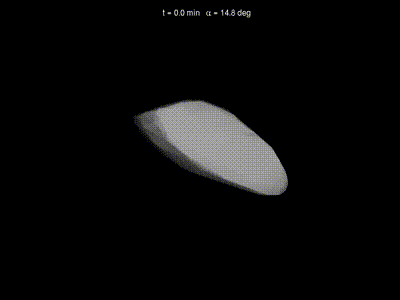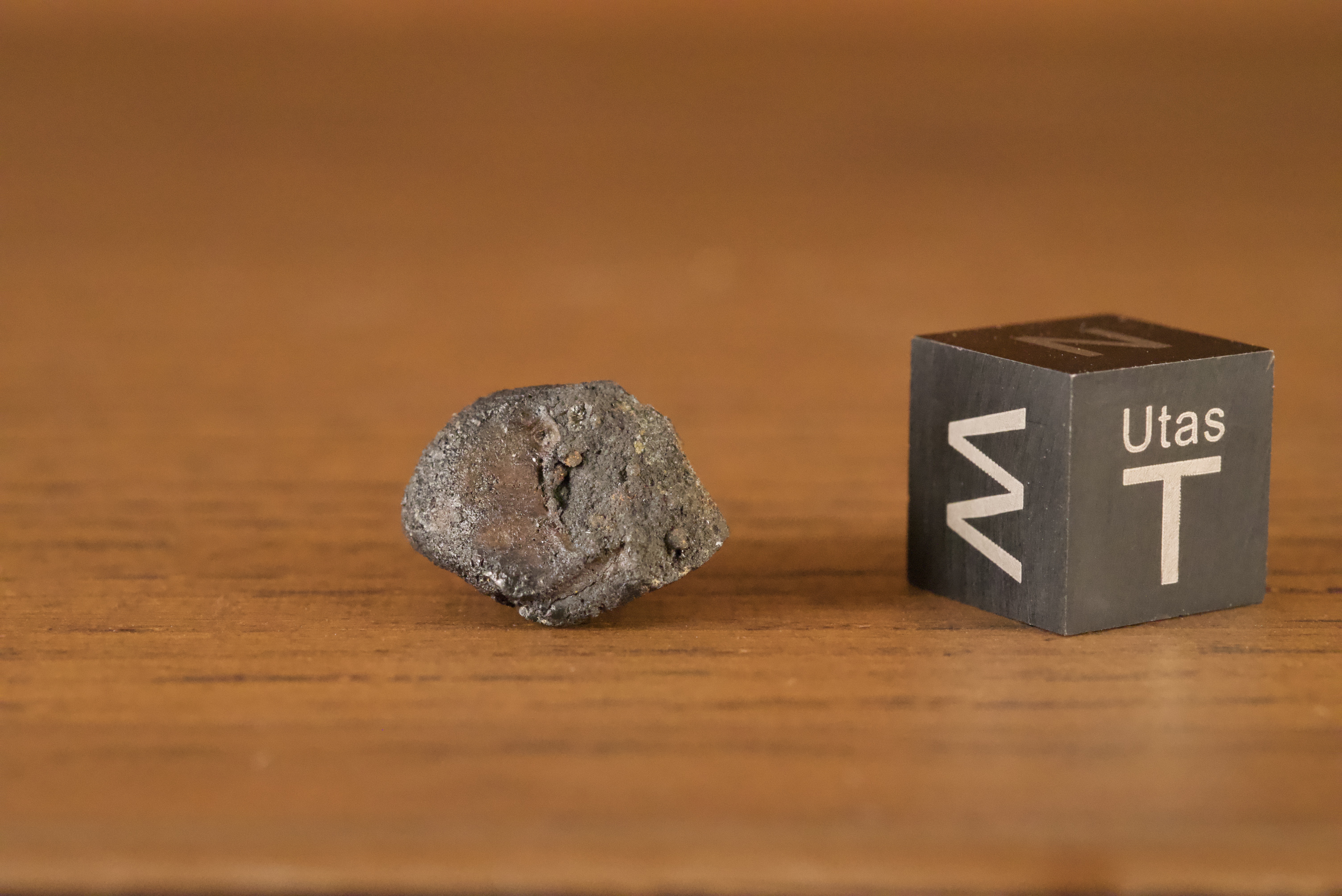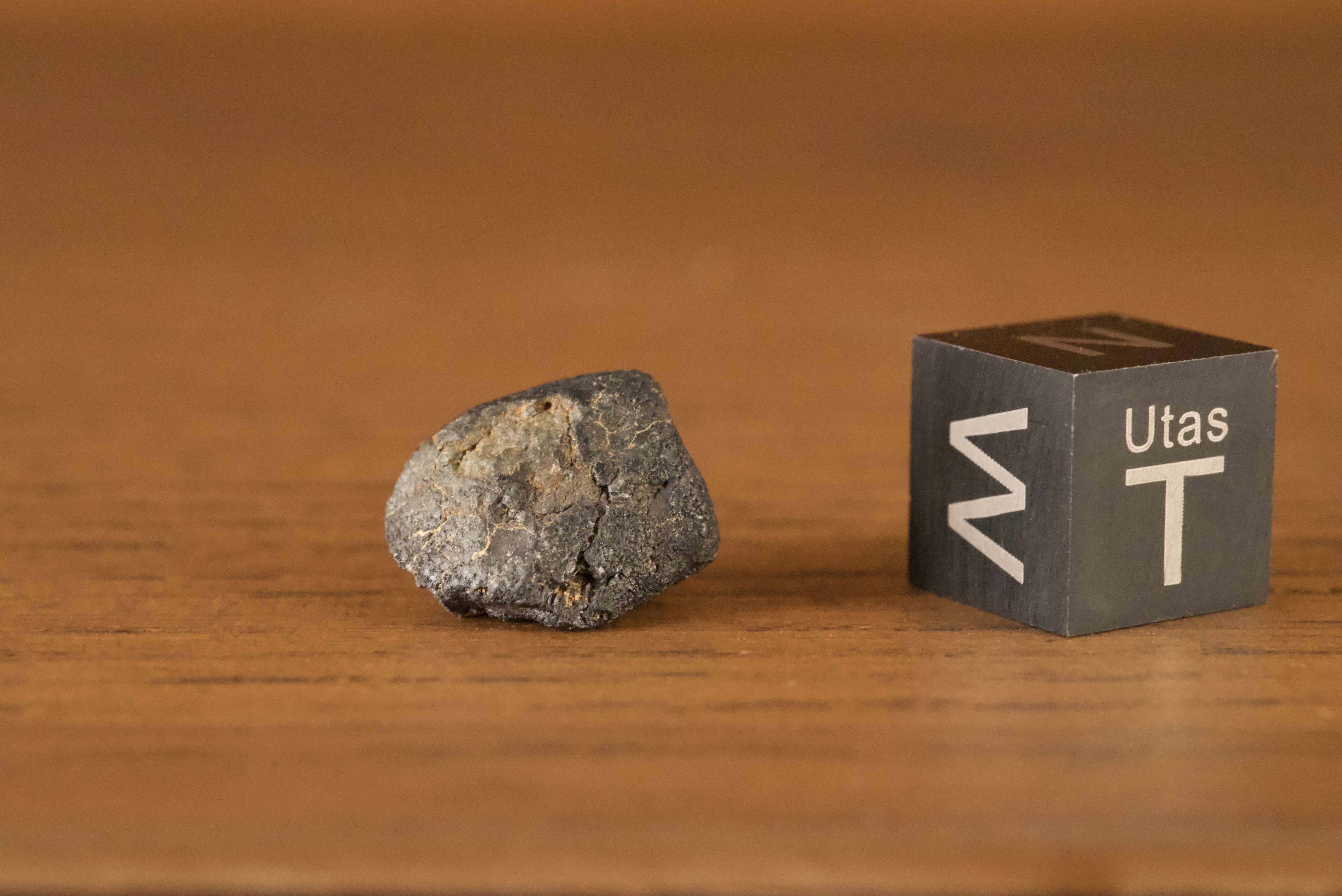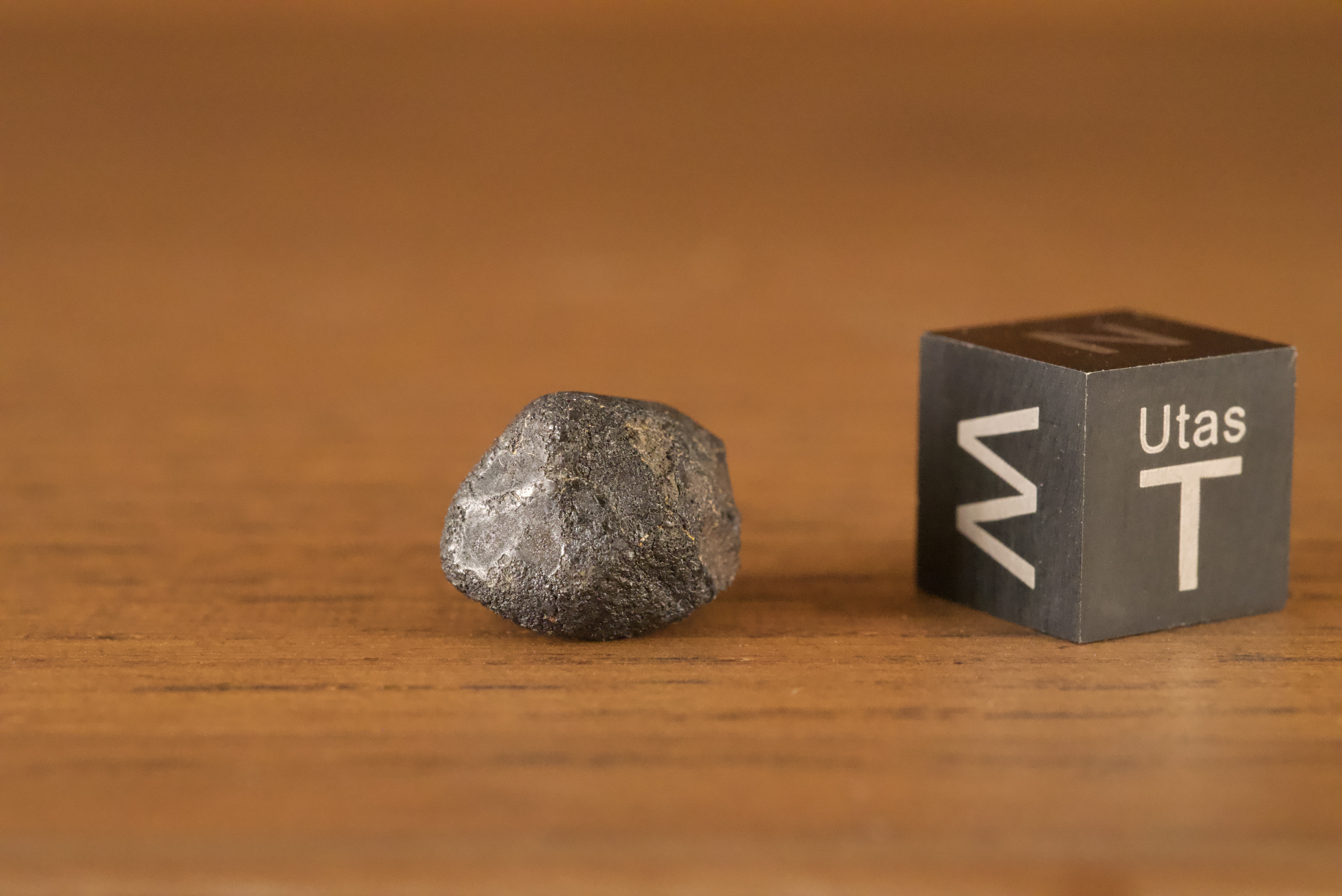Almahata Sitta, polymict breccia
2008 TC3 was a roughly 80 tonne, ~4.1 meter diameter asteroid discovered by the Catalina Sky Survey on October 6, 2008:

JPL and the CLOMON 2 semi-automatic monitoring system predicted the asteroid’s impact over the Nubian Desert the following day, and, roughly 19 hours after being discovered, it entered Earth’s atmosphere over Sudan, moving at approximately 12.8 km/sec.

Meteorites aren’t named like asteroids, though. They’re usually given the name of a geographic feature or place near where they are found. Fragments of 2008 TC3 were recovered near Almahata Sitta (in English, “Station 6”), Nahr an Nil, Sudan, so the meteorite was formally named Almahata Sitta. The meteorite is notable for having been spotted in space as a small asteroid before impacting Earth. As of 2024, several small bodies have been spotted before arriving as meteorites, but Almahata Sitta was the first.

After specimens were recovered, we discovered that the meteorite / asteroid was also a very unusual and interesting one. 2008 TC3 appears to have been a complex, rubble-pile asteroid comprised of many rare meteorite types. Recovered fragments from the fall include a wide range of meteorite types including but not limited to: a variety of ureilites with different textures; EH and EL chondrites ranging from type 3 to 6; R, LL, L, and H type 3 to 6 chondrites; a Bencubbin-like CB chondrite; and several ~unique, ungrouped carbonaceous chondrites and achondrites.
It is a very unique fall that produced unweathered examples of many rare and interesting types of meteorites, kindling years of research.
For more information, you can visit the NASA SETI page about the fall.
Most of the ‘interesting’ stones that reached collectors were ~completely sliced up. I kept an eye out for an interesting intact stone, and eventually came across this one, labelled as a ureilite. While a portion of it does appear to be ureilitic, the largest exposed face of the stone appears to be dark, friable, carbonaceous material. I don’t know what it is, exactly; my best guess is that it’s either carbonaceous chondrite of some kind, or brecciated matrix material like MS-168 and 266 or AhS 91/91A and 671.
You can see it pretty clearly in the photos below: a chip on one side of the stone looks like ~grainy charcoal (first photo), while the chip on the other side looks ~green and crystalline (second photo). It’s a small stone, but it’s a fun ~representative sample of this, to-date, unique event.
A big thanks to Anne Black of Impactika Meteorites for making this stone available.


